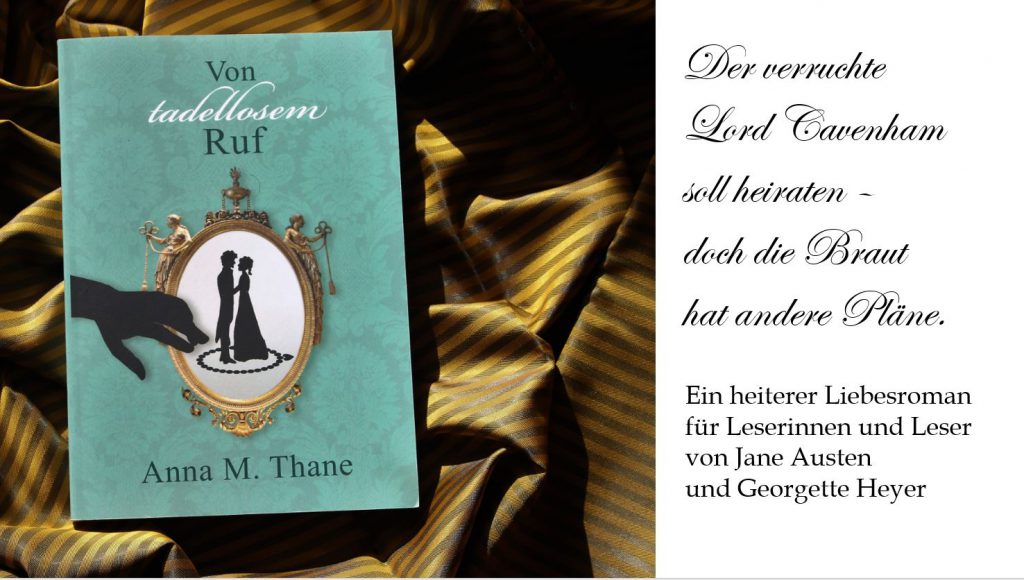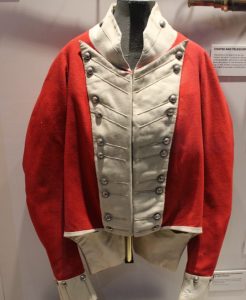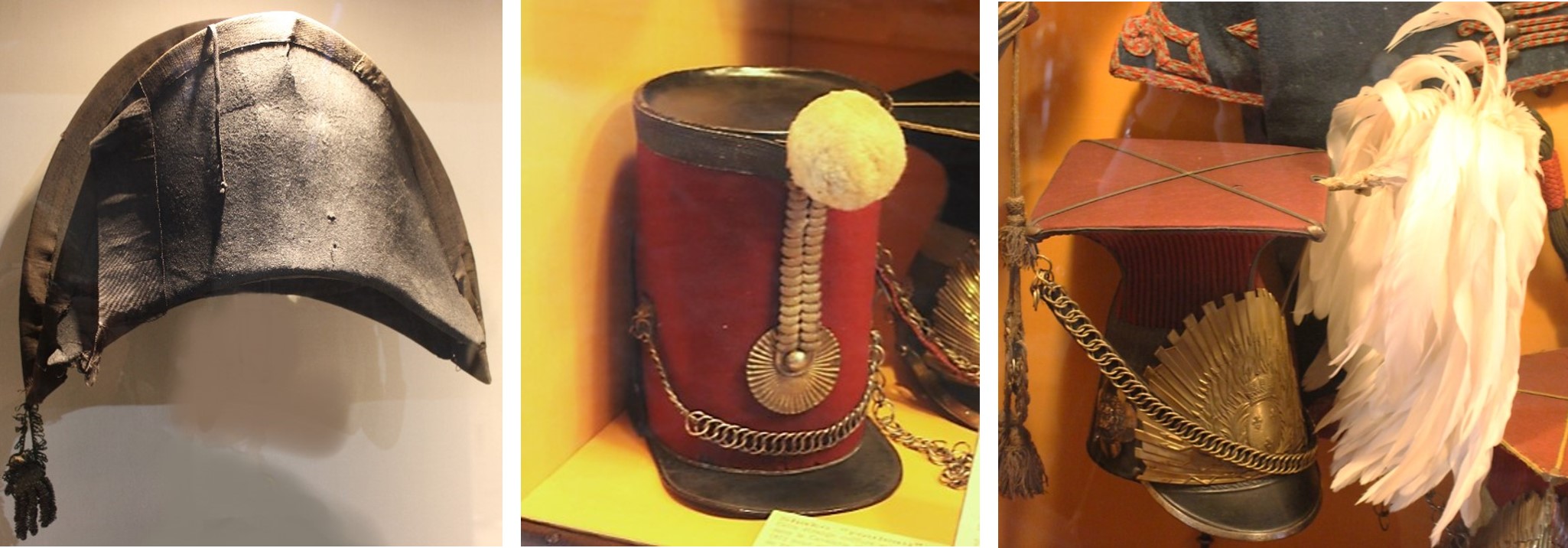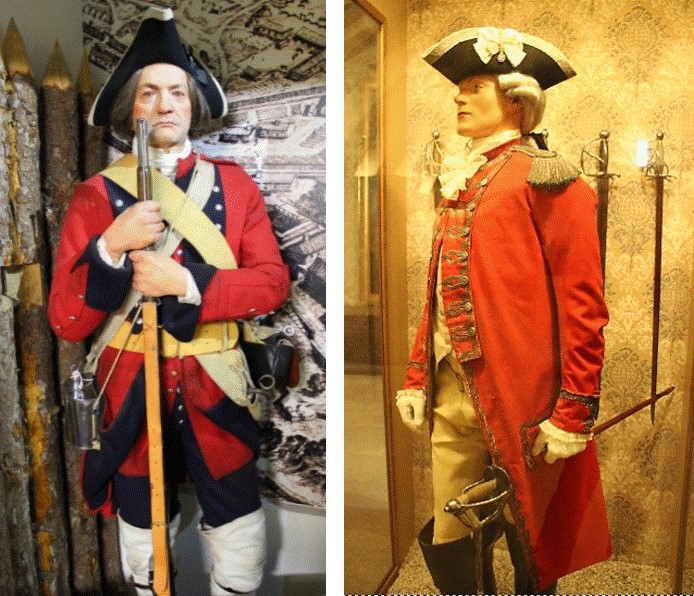The uniform dress for the army became the norm in the mid-17th century. Styles and decoration depended on status and image of the troop, and the wearer of the uniform. In contrast to today’s camouflage, uniforms of the 18th and 19th centuries displayed bright and contrasting colours. The idea was to make it easier to distinguish units in battle, and to enable commanders to spot their troops on battlefields that often were obscured by smoke from cannons.
Uniforms for lower ranks
In the 18th century, uniforms for the lower ranks were often mass-produced. Uniforms usually had standard sizes and designs to make it easier to replace them on campaign. In Britain, troops were equipped with new uniforms once a year.
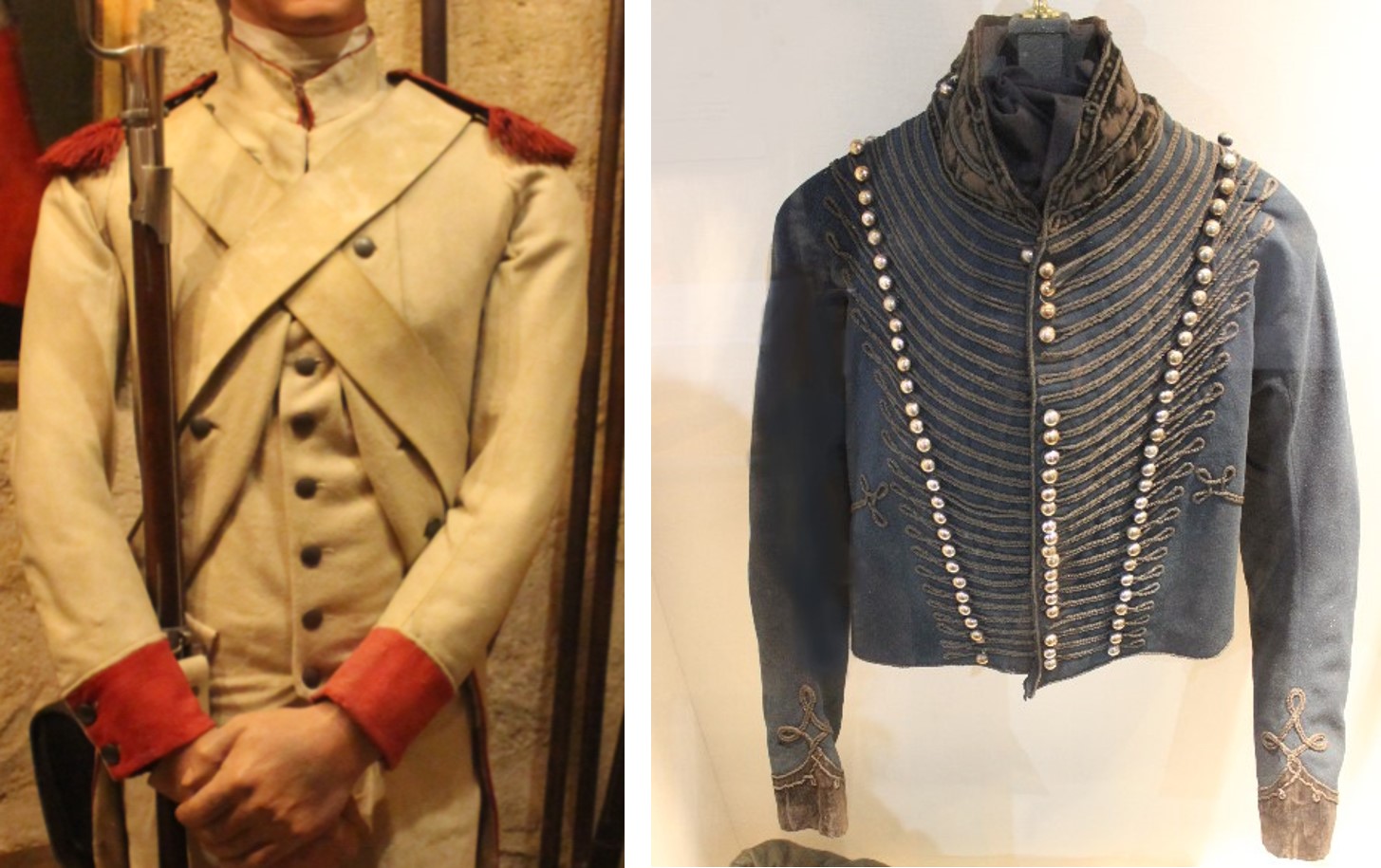
from left to right: infantry soldier (France, 1780); 95th rifles uniform (British, Peninsular Wars era)
The uniform for the lower ranks comprised a standardised form of the civilian dress, including tricorn hat, long-skirted coat, waistcoat and breeches. Gaiters were a typical part of the military uniform. They came up to mid-thigh and were fastend with many buttons. As headdresses bicornes, feathered shakos, or crested helmets became popular around the turn of the century.
The splendour of the uniform was quickly erased by the exposure to rain and sun. As dyes were primitive, uniforms of the same unit might present differing shades of colours after several weeks. The green uniforms worn by Rifle regiments were particularly prone to fading.
Uniforms for higher ranks
Officers had to pay for their own clothes. They were relatively free to wear what they liked until about the mid-18th century. Even typical rank insignia such as epaulettes were unknown until in 1768 a clothing warrant ordered officers of the British army to adopt epaulettes:
“The Officers of grenadiers to wear an epaulette on each shoulder. Those of the battalion to wear one on the right shoulder. They are to be either of embroidery or lace, with gold or silver fringe.”
Uniforms for higher ranks became the subject of detailed regulation. From the Royal Clothing Warrant, 1768:
“The coats to be lapelled to the waist with the colour of the facing of the regiment, and the colour not to be varied from what is particularly specified hereafter. They may be without embroidery or lace; but, if the Colonel thinks proper, either gold or silver embroidered or laced button-holes are permitted. To have cross pockets, and sleeves with round cuffs, and no slits. The lapels and cuffs to be of the same breadth as is ordered for the men.“
The waistcoats had to be “plain, without either embroidery or lace”, the hats “to be laced either with gold or silver, as hereafter specified, and to be cocked uniformly.”
Buttons of the uniforms had to display the number of each regiment.
Enjoy some photos of 18th-century uniforms from Britain, France, and Italy:
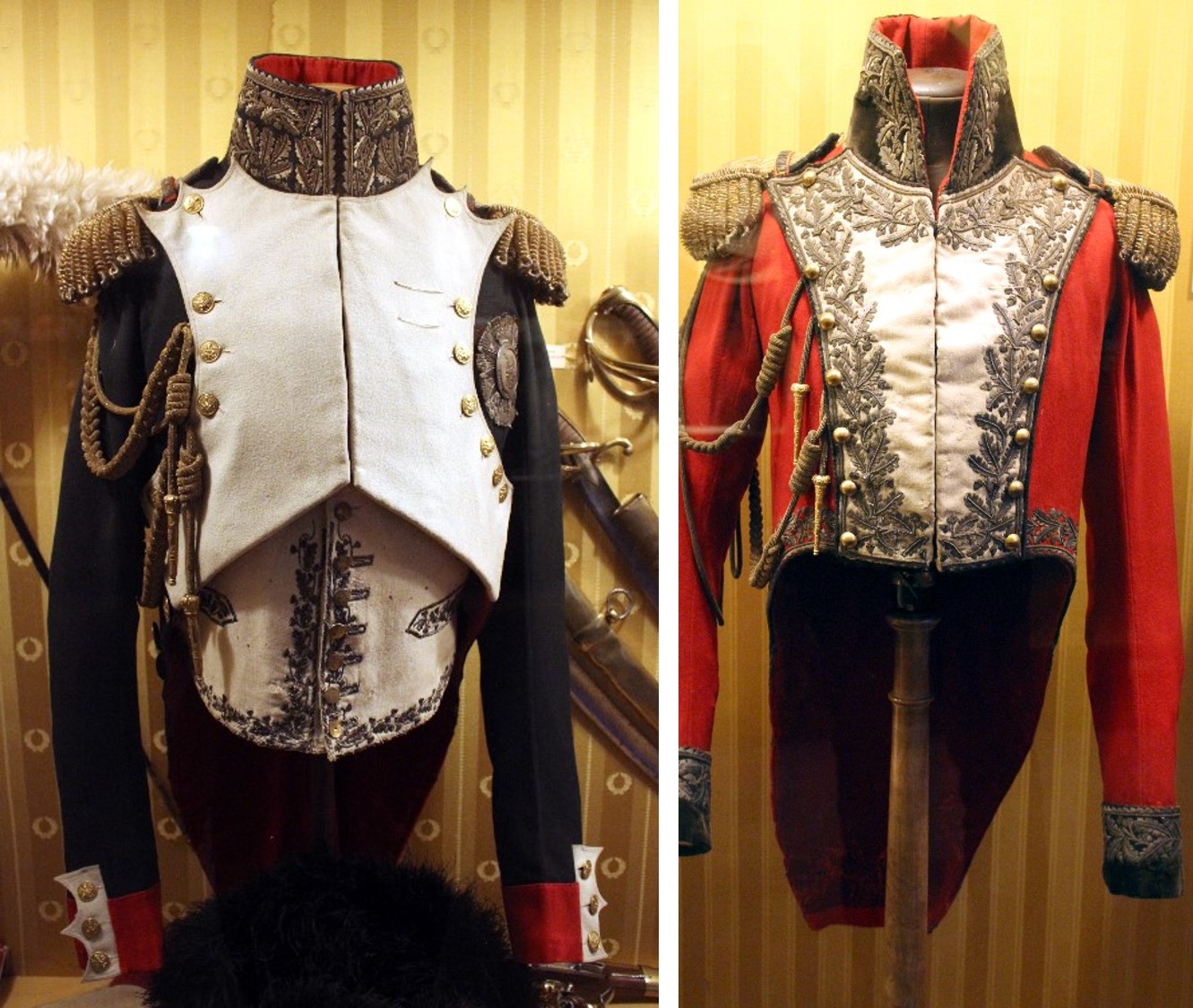
from left to right: Cavalry of the French Imperial Guard; uniform jacket of the aide de camp of General Berthier (French, 1812)
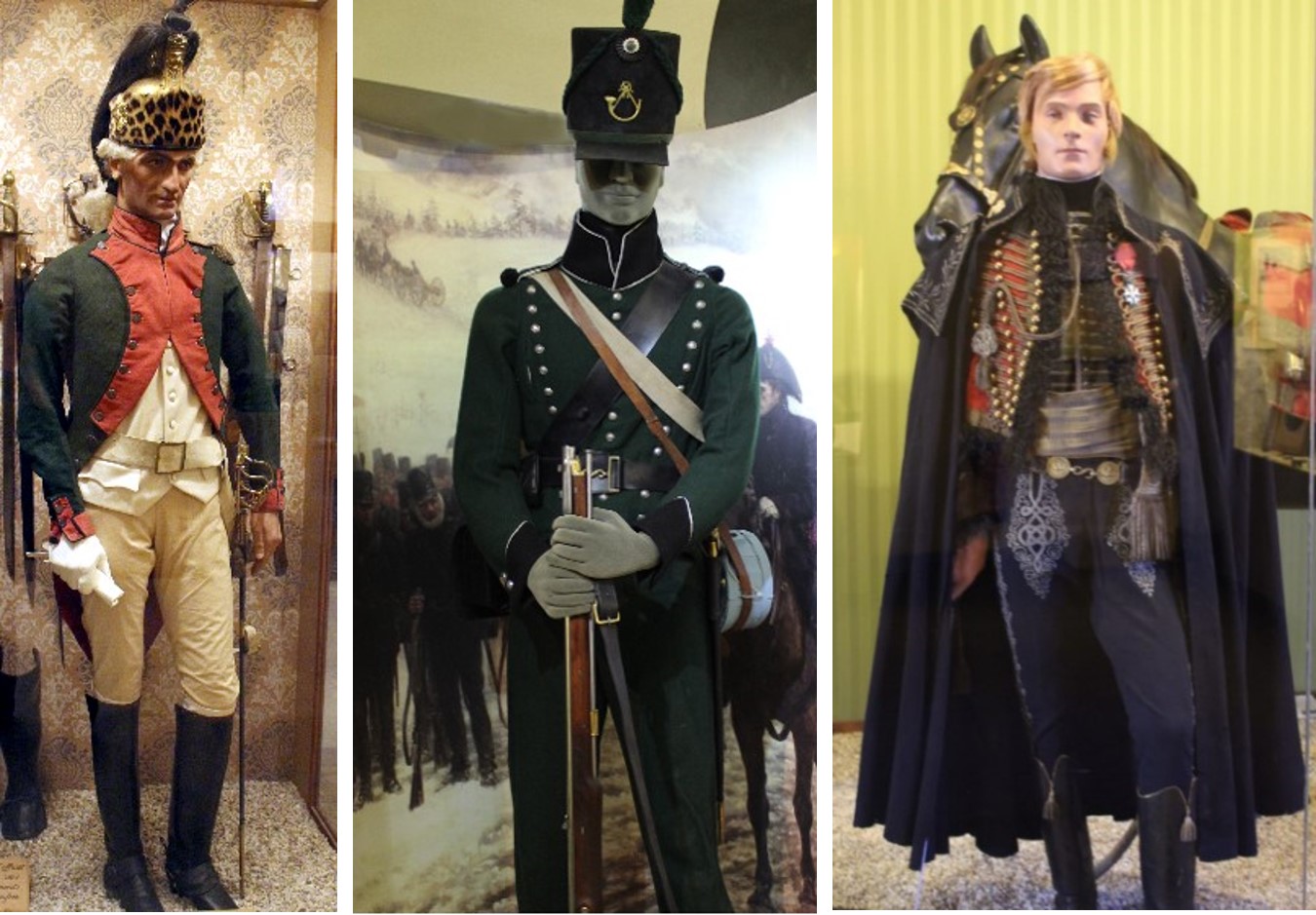
from left to right: dragoon officer of the ordinance (French, 1786), 95th rifles uniform (British), brigade general light cavalry (French, ca. 1814)
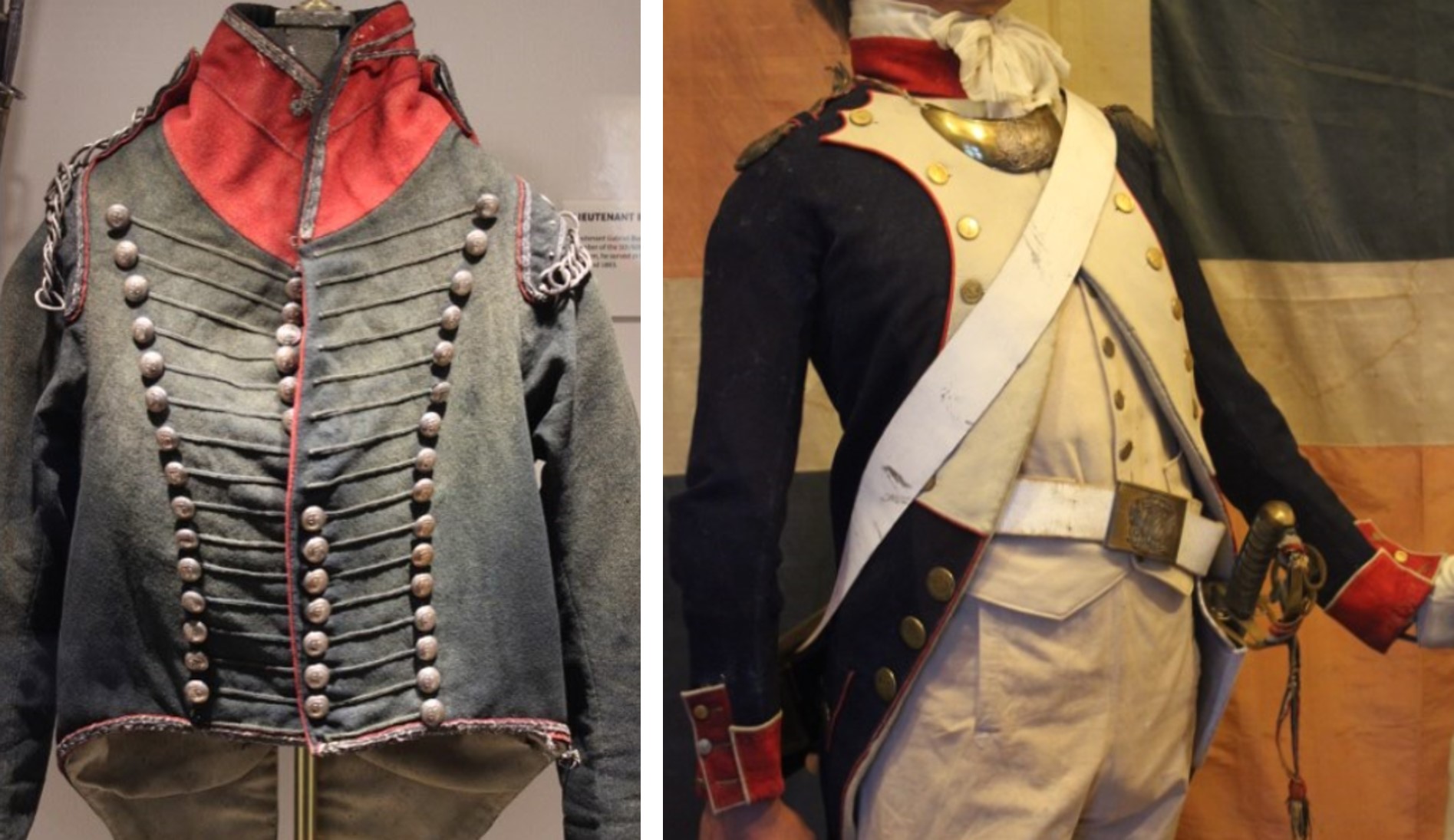
from left to right: 5th / 60th officers jacket (British, Peninsular Wars era); grenadier officer of the national guard (French, 1790)
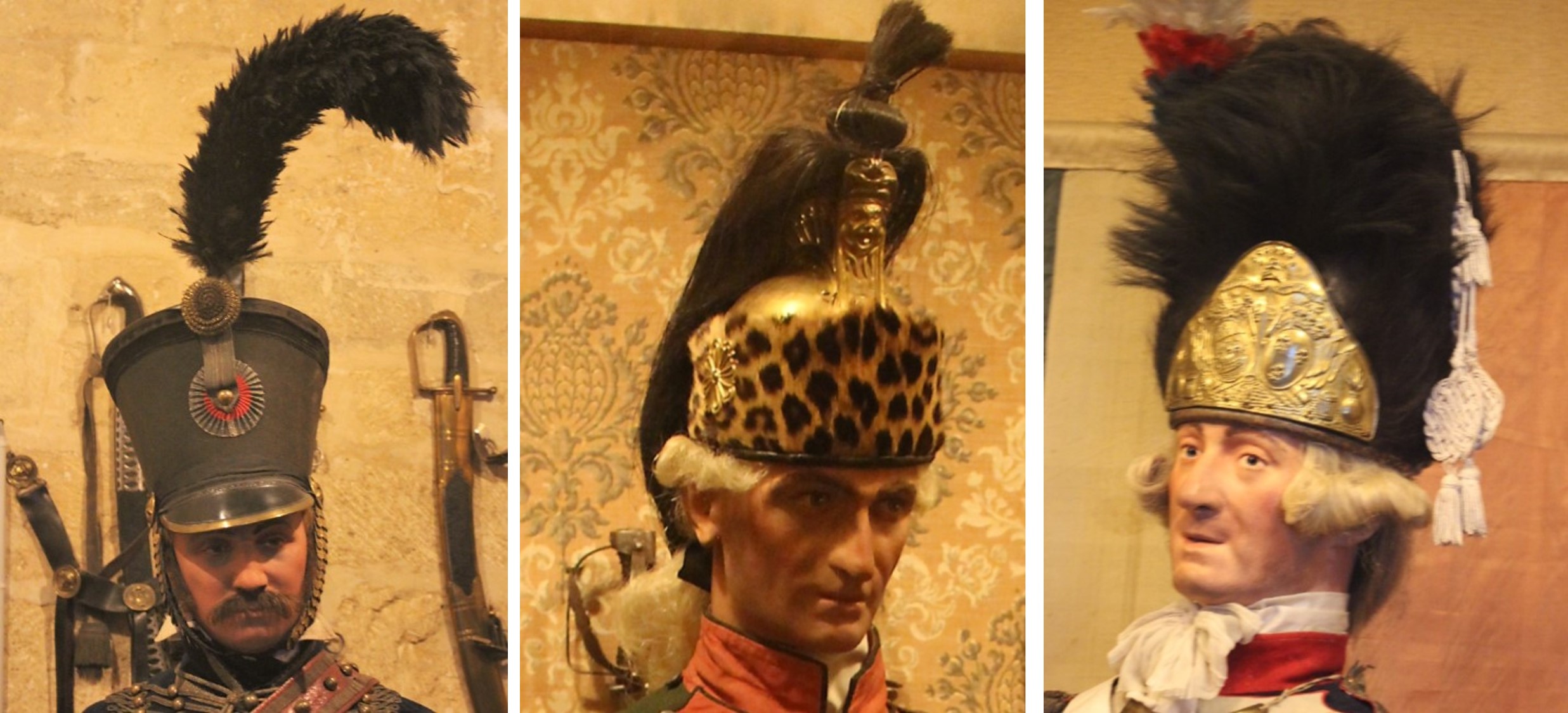
The appearance of the troops could help to intimidate the enemy: tall hats with large feathers made their wearers appear bigger and more impressive. From left to right: captain of 5th hussar regiment (French, 1811 – 1815); dragoon officer of the ordinance, (French, 1786); grenadier officer of the national guard (French, 1779)
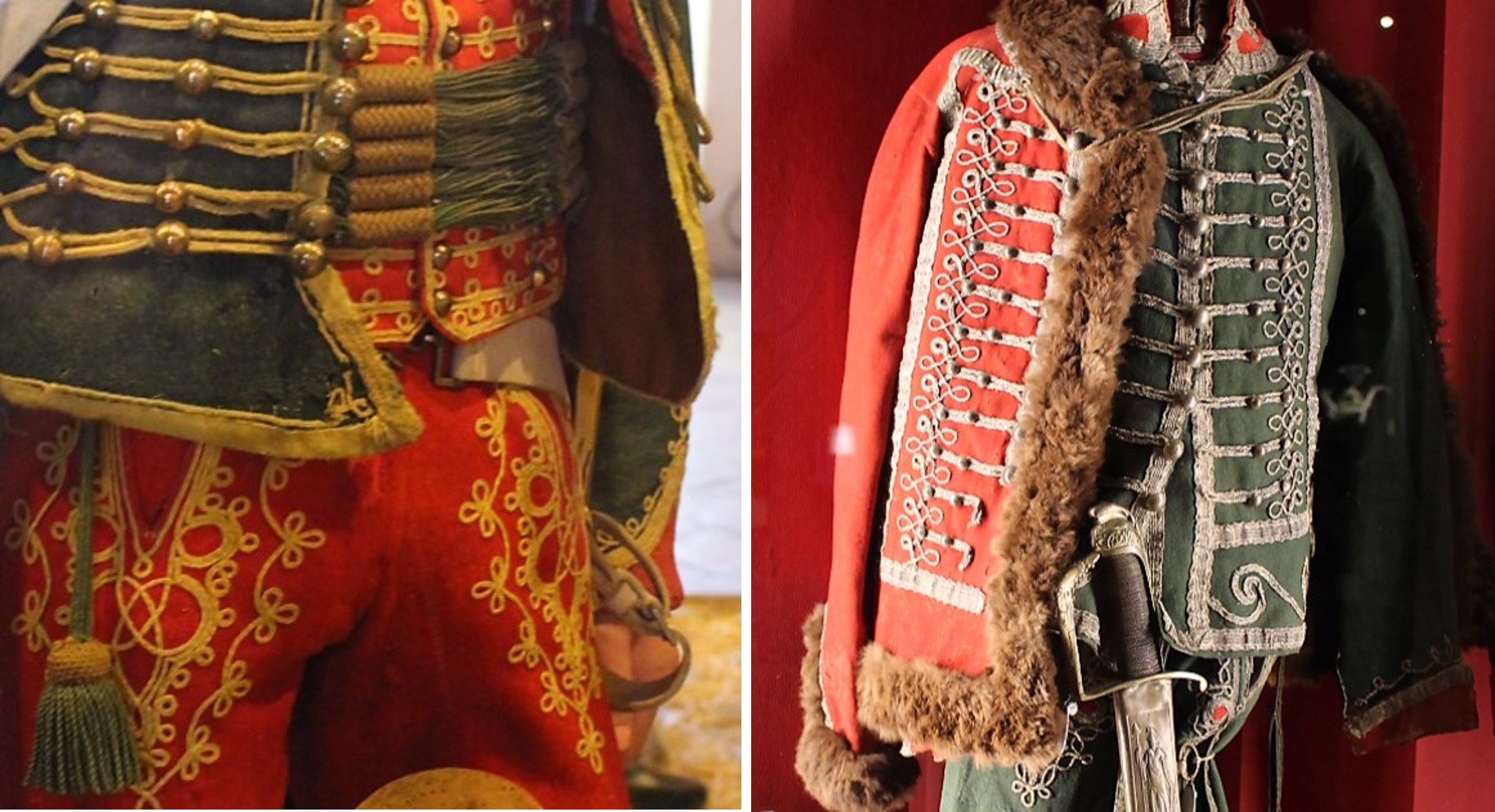
from left to right: detail of a French hussar uniform; hussar uniform of the Italian Cisalpino Republic, Light Cavalry, 1797
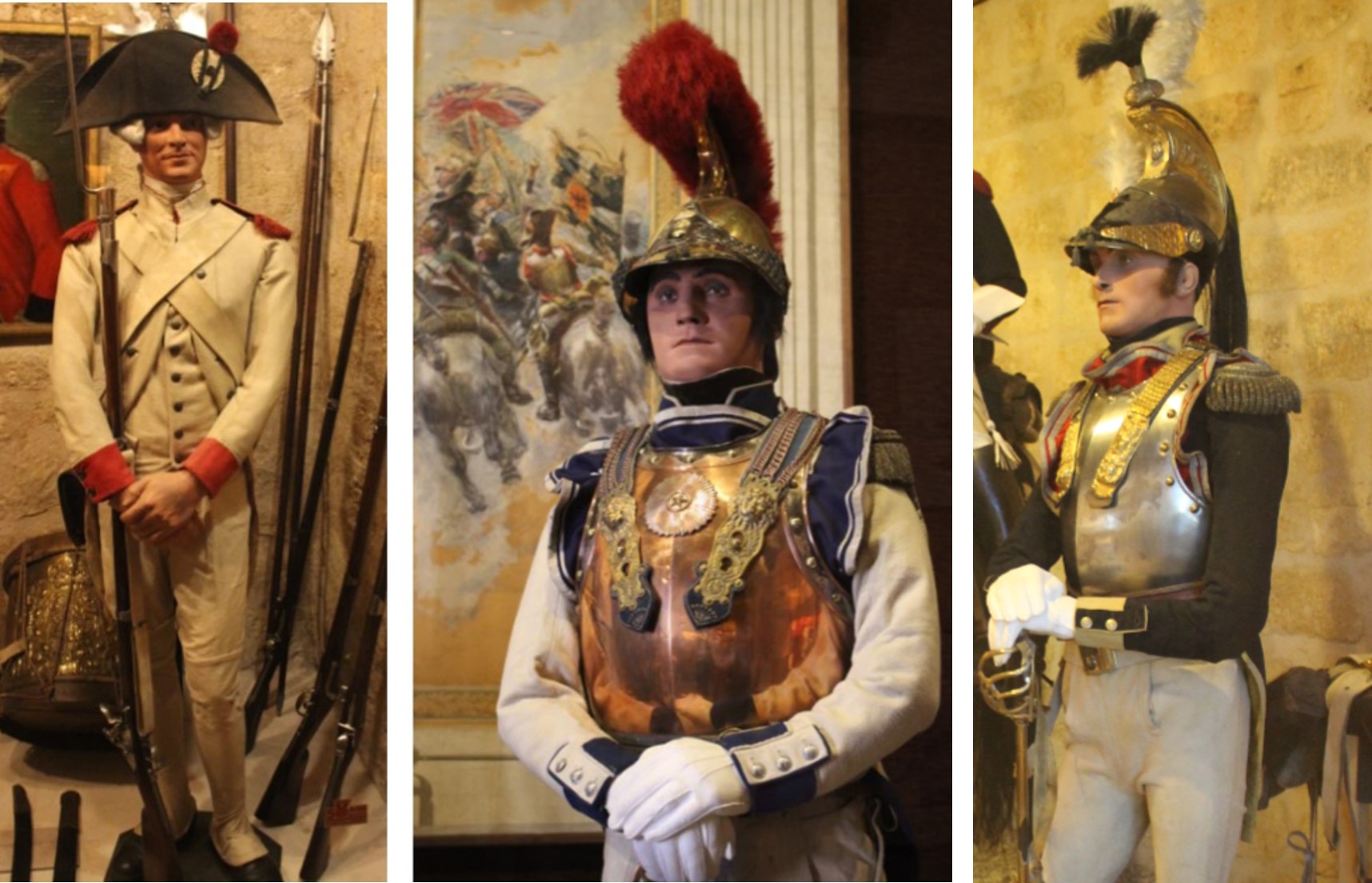
French uniforms were amongst the most striking and distinctive of the age. The cost varied from 200-250 francs (line infantryman’s outfit) to 2000 francs (a cuirassier’s uniform). From left to right: line infantryman’s outfit 1780, horse carabinier as of 1809, colonel of French cuirassier regiment
Related Topics
The Battle & the Man: 10 Quirky Facts about Admiral Nelson and Trafalgar
A Brief History of the Napoleonic Wars told … in 10 Hand-held Fans
The Evolution of the Waistcoat in the 18th Century
The World of Fashion in the 18th Century – Part 1: Accessories for Gentlemen
Jane Austen, the Captain and the Smugglers of a Tiny Island
http://regency-explorer.net/wellington/
The Origin of Now: Part 2
What Would Have Been Your Role at the Congress of Vienna 1814/1815?
Napoleon’s Taste in Shoes and other Delightful Trivia
Writer’s Travel Guide: The Jersey Connection
Sources
The Royal Clothing Warrant, 1768
Musée de L’Emperi, Montée du Puech, 13300 Salon-de-Provence, France
Royal Green Jackets Museum, Peninsula Barracks, Romsey Rd, Winchester SO23 8TS, UK
Article by Anna M. Thane, author of the novel
“Von tadellosem Ruf” (http://amzn.to/2TXvrez)
